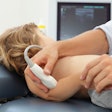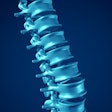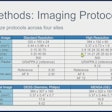
NEW YORK (Reuters Health), Jan 2 - Results of a study published in the December issue of Fertility and Sterility suggest that endometriosis, as well as various treatments for the condition, do not increase the long-term risk of fracture.
"Peak bone mass, the maximum achieved as a young adult before net bone loss ensues, is a major determinant of bone density and fracture risk later in life," Dr. L. Joseph Melton, III, and colleagues from the Mayo Clinic, Rochester, Minnesota, write. "Most research has focused on the interaction of genetic potential with diet and exercise, but suboptimal peak bone mass has also been linked with reproductive and menstrual disorders."
In a large, population-based study of unselected women, the researchers determined if women with pelvic endometriosis had an increased risk of fracture. Using the data resources of the Rochester Epidemiology Project, the team identified 987 women with endometriosis that was surgically visualized or histological proven between 1970 and 1989. The subjects were followed-up for fracture reported in complete inpatient and outpatient community medical records.
The women, who were a median age of 35 years old at diagnosis, were observed for 17,408 person-years. During this time, 256 women experienced 449 different fractures. The cumulative incidence of fracture after 20 years was 30.8%, compared with an expected rate of 30.6% for women of like age.
"In a multivariable analysis, age was the strongest risk factor for any fracture (hazard ratio per 10-year increase: 1.61," Dr. Melton's team notes. Other variables that remained significant predictors of fracture included corticosteroid use (HR: 2.78); history of a prior hip, spine, or distal forearm fracture (HR: 1.82); and treatment with tamoxifen or raloxifene for 6 months or longer (HR: 4.34).
A protective effect was seen with physical activity (HR: 0.40). Surgery or other medical treatments for endometriosis did not significantly influence fracture risk.
Based on the results of this study, which quantified the risk of all types of fracture associated with endometriosis, the researchers conclude that "long-term fracture risk is not a particular concern for most community women with this condition."
Fertil Steril 2006;86:1576-1583.
Copyright © 2007 Reuters Limited. All rights reserved. Republication or redistribution of Reuters content, including by framing or similar means, is expressly prohibited without the prior written consent of Reuters. Reuters shall not be liable for any errors or delays in the content, or for any actions taken in reliance thereon. Reuters and the Reuters sphere logo are registered trademarks and trademarks of the Reuters group of companies around the world.
















